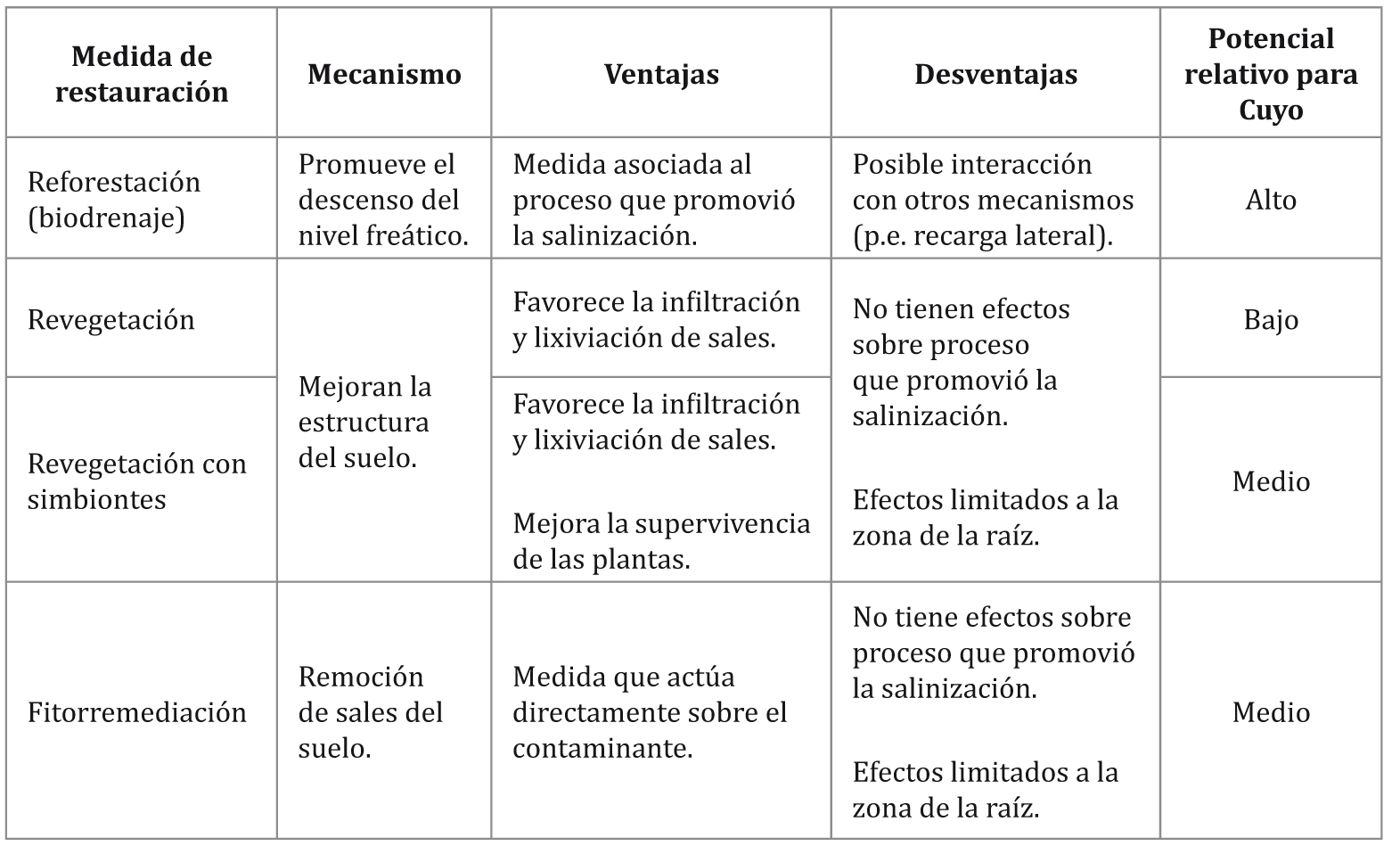Soil salinization in irrigated drylands: prospects for restoration in Cuyo, Argentina
Keywords:
oasis, productive restoration, secondary salinization, sustainabilityAbstract
Drylands are characterized among other things by low rainfall and soils with insufficient water. In these regions, agricultural production depends on irrigation, which transforms arid ecosystems into irrigated arable areas, as in the Cuyo region, in the central-western Argentina. Although these lands support the majority of the population, they are often associated with degradation processes. One of the main consequences of unsustainable agriculture is soil salinization, which occurs either because perennial deep-rooted native vegetation is replaced by annual crops or as a result of excessive irrigation and deficient drainage. Salinization is a global problem, since it reduces the productivity of large arable areas, decreases land value and leads to their abandonment. In this context, ecosystem restoration is a strategic approach to reverse the degradation of irrigated drylands, recover services and promote the conservation of arid ecosystems at the regional scale. In this paper we review the factors, both those linked to the biophysical environment and those determined by human activities, which are associated with salinization in different regions, as well as the implemented measures for rehabilitating these environments. Furthermore, the terminology associated with the practice of restoration is revised and a suitable alternative for exploring this approach in Cuyo is proposed: the productive restoration using species of the Prosopis genus.
Downloads

Downloads
Published
How to Cite
Issue
Section
License
Aquellos autores/as que tengan publicaciones con esta revista, aceptan las Políticas Editoriales.










.jpg)




